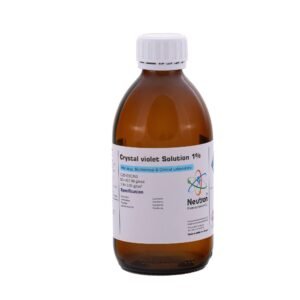Neisser’s Methylene Blue
| Density | 1.00 g/m3 |
| HS Code | 32041300 |
| Storage | Storage at +15 to +25°C |
| SDS | available |
| Odour | weakly of acetic acid |
| Form | Liquid |
| Color | blue |
| Solubility in water | ( 20 °C ) soluble |
| Description | Conforms | |
| Identification | Conforms | |
| Application test | Conforms |
Neisser’s Methylene Blue is a special formulation of methylene blue used primarily in microbiological staining techniques, particularly in the Neisser staining method to identify metachromatic granules in Corynebacterium species.
🏭⚗️ Production
Neisser’s methylene blue is prepared by diluting methylene blue dye in an acidic aqueous solution, often combined with acetic acid and alcohol. This modified solution allows selective staining of cellular components. It is typically used alongside Neisser’s counterstain (commonly Bismarck brown or crystal violet) for differential contrast.
🔬 Properties
This reagent appears as a blue-colored liquid and has a slightly acidic pH. It binds strongly to phosphate-rich intracellular components like volutin granules (also known as metachromatic granules). Under the microscope, these granules appear dark blue or purple, contrasting against the lighter background of the cytoplasm.
🧪 Applications
Neisser’s methylene blue is primarily used in Neisser staining, a differential stain to detect Corynebacterium diphtheriae and related species. The stain highlights metachromatic granules, aiding in the rapid presumptive identification of diphtheria-causing bacteria in clinical specimens. It may also be used for general cytological staining in some bacterial preparations.
⚠️ Safety
Like other aniline dyes, methylene blue can cause irritation to the skin, eyes, and respiratory system. Use gloves, lab coat, and eye protection when handling. Avoid inhalation of vapors and contact with mucous membranes. Store in a tightly closed container, away from light and strong oxidizers.





